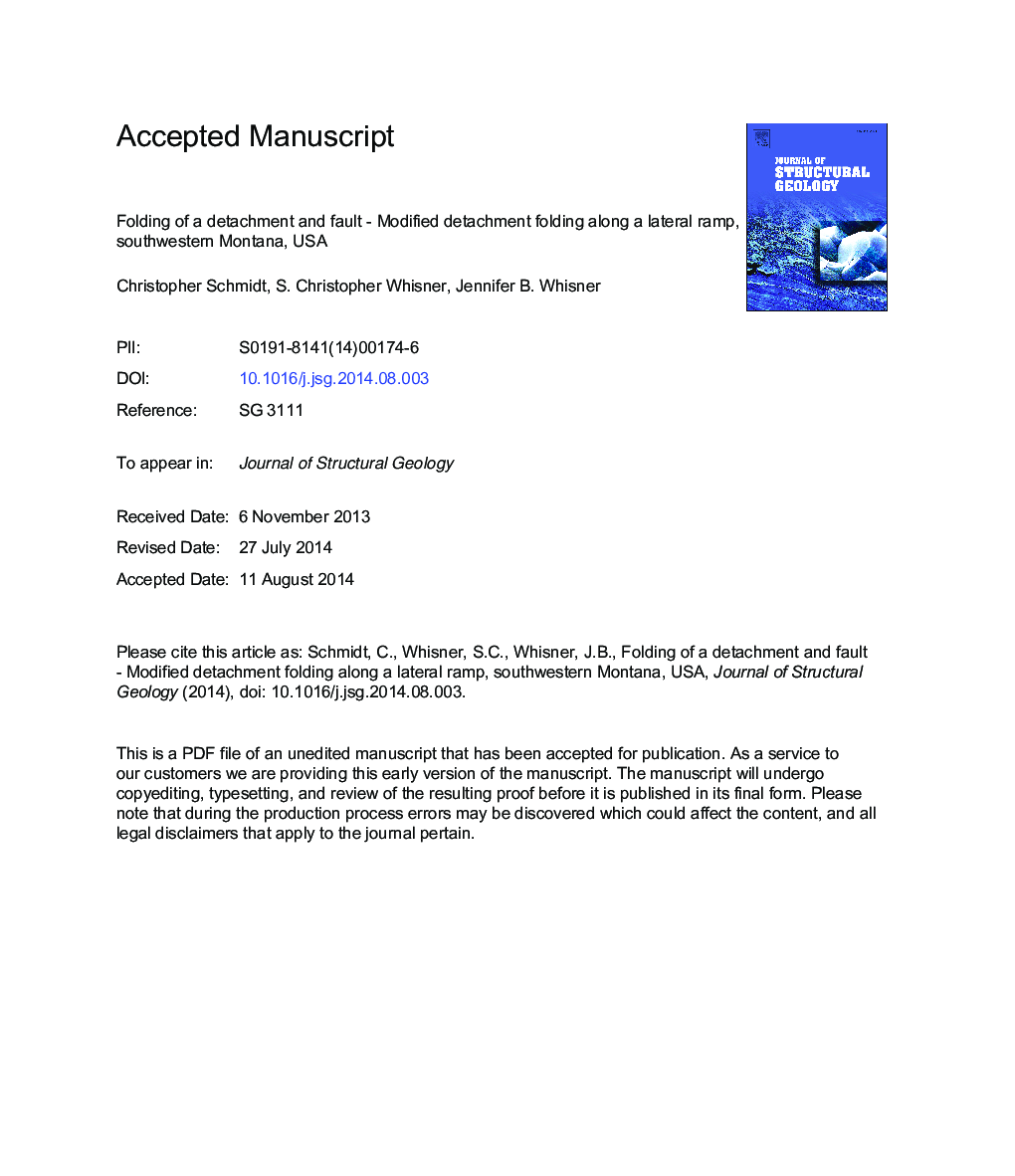| Article ID | Journal | Published Year | Pages | File Type |
|---|---|---|---|---|
| 6444913 | Journal of Structural Geology | 2014 | 42 Pages |
Abstract
The inversion of the Middle Proterozoic Belt sedimentary basin during Late Cretaceous thrusting in Montana produced a large eastwardly-convex salient, the southern boundary of which is a 200Â km-long oblique to lateral ramp subtended by a detachment between the Belt rocks and Archean basement. A 10Â km-long lateral ramp segment exposes the upper levels of the detachment where hanging wall Belt rocks have moved out over the Paleozoic and Mesozoic section. The hanging wall structure consists of a train of high amplitude, faulted, asymmetrical detachment folds. Initial west-east shortening produced layer parallel shortening fabrics and dominantly strike slip faulting followed by symmetrical detachment folding. “Lock-up” of movement on the detachment surface produced regional simple shear and caused the detachment folds to become asymmetrical and faulted. Folding of the detachment surface after lock-up modified the easternmost detachment folds further into a southeast-verging, overturned fold pair with a ramp-related fault along the base of the stretched mutual limb.
Keywords
Related Topics
Physical Sciences and Engineering
Earth and Planetary Sciences
Geology
Authors
Christopher Schmidt, S. Christopher Whisner, Jennifer B. Whisner,
